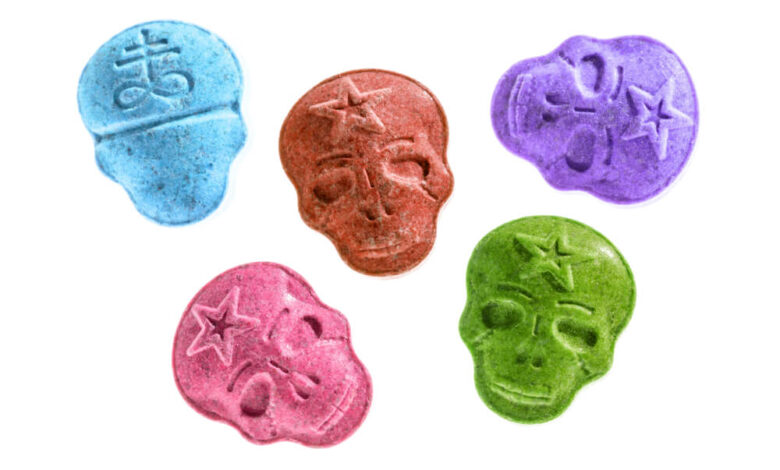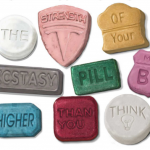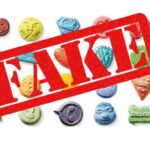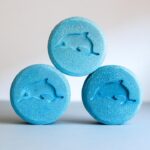What Is Ecstasy (MDMA/Molly)?

What is MDMA?
MDMA, commonly known as ecstasy or Molly, is a synthetic psychoactive drug (3,4-methylenedioxy-methamphetamine) that is chemically similar to both stimulants and hallucinogens. It belongs to the class of drugs called entactogens, which means it produces feelings of empathy, emotional openness, and increased sociability.
MDMA was originally developed in the early 1900s as a potential appetite suppressant, but its psychoactive effects were later discovered. In the 1970s and 1980s, it gained popularity as a recreational drug due to its ability to enhance mood and create a sense of euphoria.
When taken, MDMA increases the activity of three neurotransmitters in the brain: serotonin, dopamine, and norepinephrine. This results in an increase in energy heightened sensory perception, and feelings of emotional warmth and empathy. Users often report experiencing enhanced sociability, empathy, and an increased sense of connection with others.
The drug is typically consumed orally in tablet or capsule form, but it can also be crushed into a powder and snorted. The effects of MDMA usually begin within 30 to 45 minutes after ingestion and can last for several hours. Some common effects include increased sociability, heightened sensory perception, enhanced mood, and a sense of well-being. However, it’s important to note that MDMA can also have negative side effects such as increased heart rate, dehydration, anxiety, and sleep disturbances.
It’s worth mentioning that ecstasy and Molly are street names for MDMA, but the actual content of these drugs can vary widely. Illicit ecstasy tablets often contain additional substances, such as amphetamines, caffeine, or other drugs. Molly, on the other hand, is often marketed as pure MDMA, but it can still be adulterated or mixed with other substances. The lack of regulation and variability in purity make it difficult to determine the exact contents of ecstasy or Molly without proper testing.
This substance shares chemical similarities with both stimulants and hallucinogens, resulting in heightened energy, pleasure, emotional warmth, and altered sensory perceptions. Initially, it gained popularity within the nightclub and all-night dance party (rave) culture. However, the drug now impacts a wider range of individuals, who commonly refer to it as Ecstasy or Molly.
MDMA is classified as a Schedule I controlled substance in the United States, meaning it is illegal to possess, distribute, or manufacture. Its recreational use carries various risks, including the potential for adverse physical and psychological effects. If you or someone you know is struggling with substance abuse, it is important to seek professional help from a healthcare provider or addiction specialist.
Does MDMA Have Therapeutic Value?
The evidence on MDMA’s therapeutic effects is limited thus far, although research is ongoing in this area. Proponents of MDMA-assisted therapy recommend that it only be used for reactive disorders such as post-traumatic stress disorder because it can worsen some psychiatric conditions.
In the early 1990s, the FDA approved the first human trial exploring whether MDMA could help relieve pain in terminally ill patients, as well as serve as an adjunct to psychotherapy. Results from this study have not been published; however, these early studies helped establish safety parameters for administering MDMA to human participants in controlled, clinical settings.
A small study published in The Lancet Psychiatry looked at the use of MDMA in patients suffering from post-traumatic stress disorder (PTSD). Researchers gave three different doses of MDMA to 22 veterans, three firefighters and one police officer with PTSD. Among the participants, 23% had used ecstasy before. MDMA use was also combined with psychotherapy sessions. A month after the second session, a greater percentage in the high-dose groups no longer met diagnostic criteria for PTSD, compared with the low-dose group.
After one year, 16 of the 26 participants (62%) no longer suffered from PTSD, but two had received a new diagnosis of PTSD. In addition, 12 patients were also taking additional psychiatric medications.
Side effects occurred with all doses, and included: anxiety, headache, fatigue, muscle tension, difficulty sleeping (insomnia), and suicidal thoughts.
However, not all experts were convinced. Long-term safety could not be guaranteed with this small group, and there is a risk of addiction and suicide in a population already at risk for these serious outcomes. Researchers note larger phase 3 studies should be completed, but those with PSTD should NOT use MDMA on their own to try to replicate these results.
Health Hazards of Ecstasy Use
The use of Ecstasy (MDMA) carries several health hazards and risks. Here are some of the potential dangers associated with Ecstasy use:
1. Dehydration: MDMA can lead to increased body temperature and excessive sweating, which can cause dehydration. Failing to drink enough fluids can result in serious complications, including organ failure.
2. Overheating: Ecstasy can raise body temperature to dangerous levels, leading to hyperthermia. This condition can result in muscle breakdown, kidney failure, and even death.
3. Cardiovascular problems: MDMA use can cause an increase in heart rate and blood pressure. Individuals with pre-existing cardiovascular conditions are at a higher risk of experiencing adverse effects, such as heart attack or stroke.
4. Hyponatremia: Ecstasy use is often associated with excessive water intake, which, when combined with the drug’s effects on kidney function, can dilute the body’s sodium levels. This condition, known as hyponatremia, can be life-threatening.
5. Serotonin syndrome: MDMA enhances the release of serotonin in the brain, which can lead to an excessive accumulation of serotonin. This can result in a potentially life-threatening condition called serotonin syndrome, characterized by agitation, confusion, rapid heart rate, high blood pressure, and seizures.
6. Neurological effects: Prolonged use of Ecstasy has been linked to cognitive impairments, including memory problems, decreased attention span, and difficulty with critical thinking.
7. Unknown substances: Street-bought Ecstasy pills or Molly may contain other substances, such as adulterants or dangerous additives, which can increase the risk of adverse effects or toxicity.
8. Mental health concerns: Ecstasy use has been associated with negative psychological effects, including anxiety, depression, and long-term changes in mood and emotional functioning.
It is important to note that these risks can vary depending on individual factors, such as the dose, frequency of use, pre-existing medical conditions, and the environment in which the drug is consumed. If you or someone you know is struggling with Ecstasy use, it is crucial to seek professional help and support.
How to Overcome Ecstasy Use
Overcoming Ecstasy (MDMA) use can be challenging, but it is possible with the right support and strategies. Here are some steps you can take to address Ecstasy use:
1. Acknowledge the problem: Recognize that Ecstasy use has become an issue and commit to making a change. Acceptance is an important first step in overcoming any substance use problem.
2. Seek professional help: Consult a healthcare professional or addiction specialist who can provide guidance and support tailored to your specific needs. They can help you develop a personalized treatment plan and connect you with appropriate resources.
3. Build a support network: Surround yourself with a supportive network of friends, family, or support groups who understand your struggles and can provide encouragement. Consider joining a support group or attending therapy sessions where you can share your experiences with others facing similar challenges.
4. Develop coping mechanisms: Identify healthier coping mechanisms and activities that can replace Ecstasy use. This might include engaging in hobbies, exercise, meditation, or finding creative outlets. Learning to manage stress and emotions in healthier ways is crucial for long-term recovery.
5. Address underlying issues: Explore and address any underlying issues that may have contributed to your Ecstasy use. This could involve therapy to address mental health concerns, unresolved traumas, or other factors that may have influenced your substance use.
6. Create a relapse prevention plan: Work with your healthcare professional to develop a relapse prevention plan. Identify triggers and develop strategies to avoid or manage them effectively. Having a plan in place can help you stay focused and resilient during challenging times.
7. Practice self-care: Prioritize self-care by focusing on your physical, emotional, and mental well-being. Get enough sleep, eat nutritious meals, and engage in activities that promote relaxation and self-reflection. Taking care of yourself holistically can contribute to your overall recovery.
8. Stay motivated and patient: Recovery is a journey that takes time and effort. It’s important to stay motivated and patient with yourself throughout the process. Celebrate small victories and seek support during setbacks.
Remember, overcoming Ecstasy use is a personal process, and there is no one-size-fits-all approach. Seeking professional help and building a strong support network are key elements in successfully addressing substance use.




